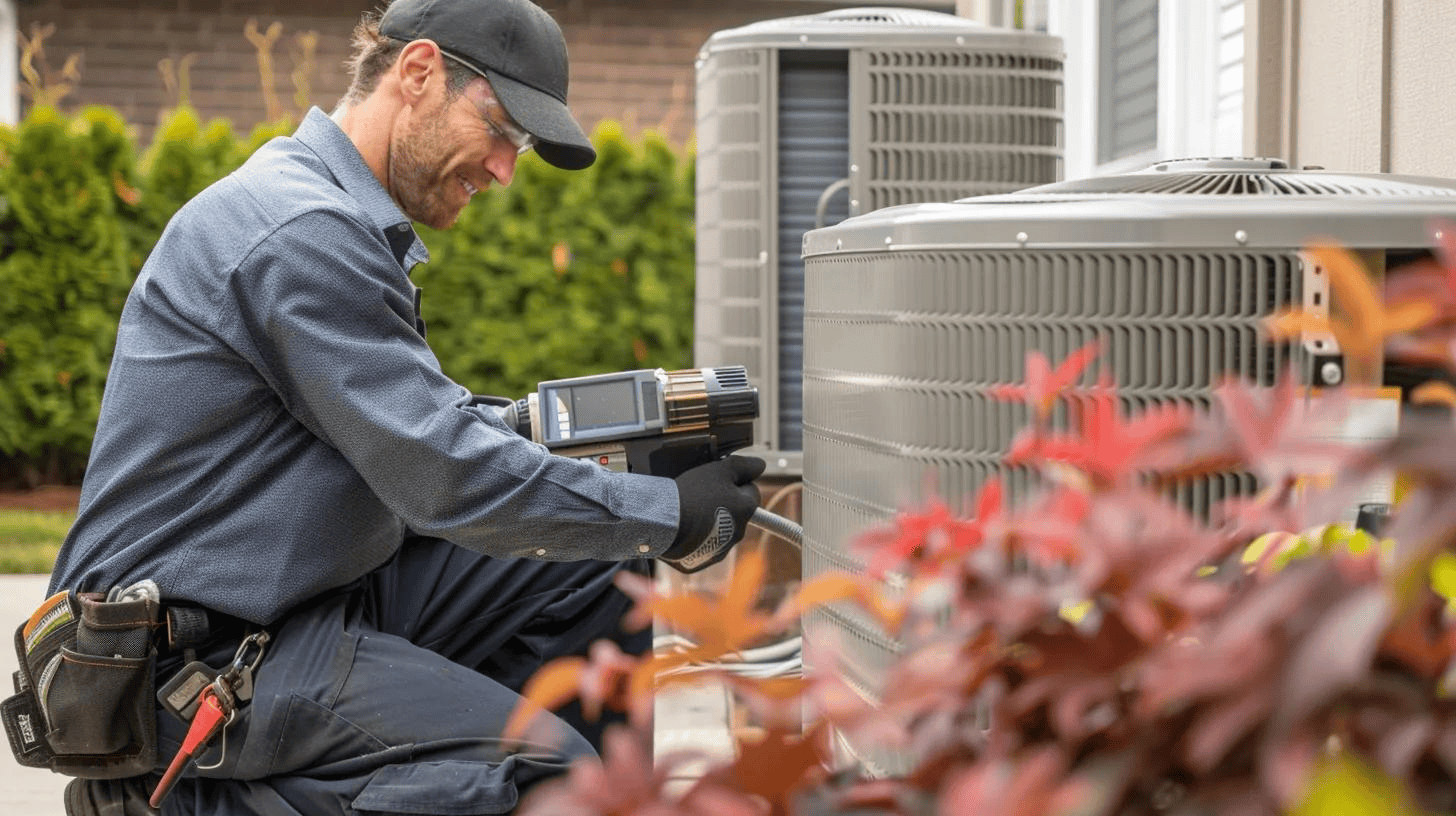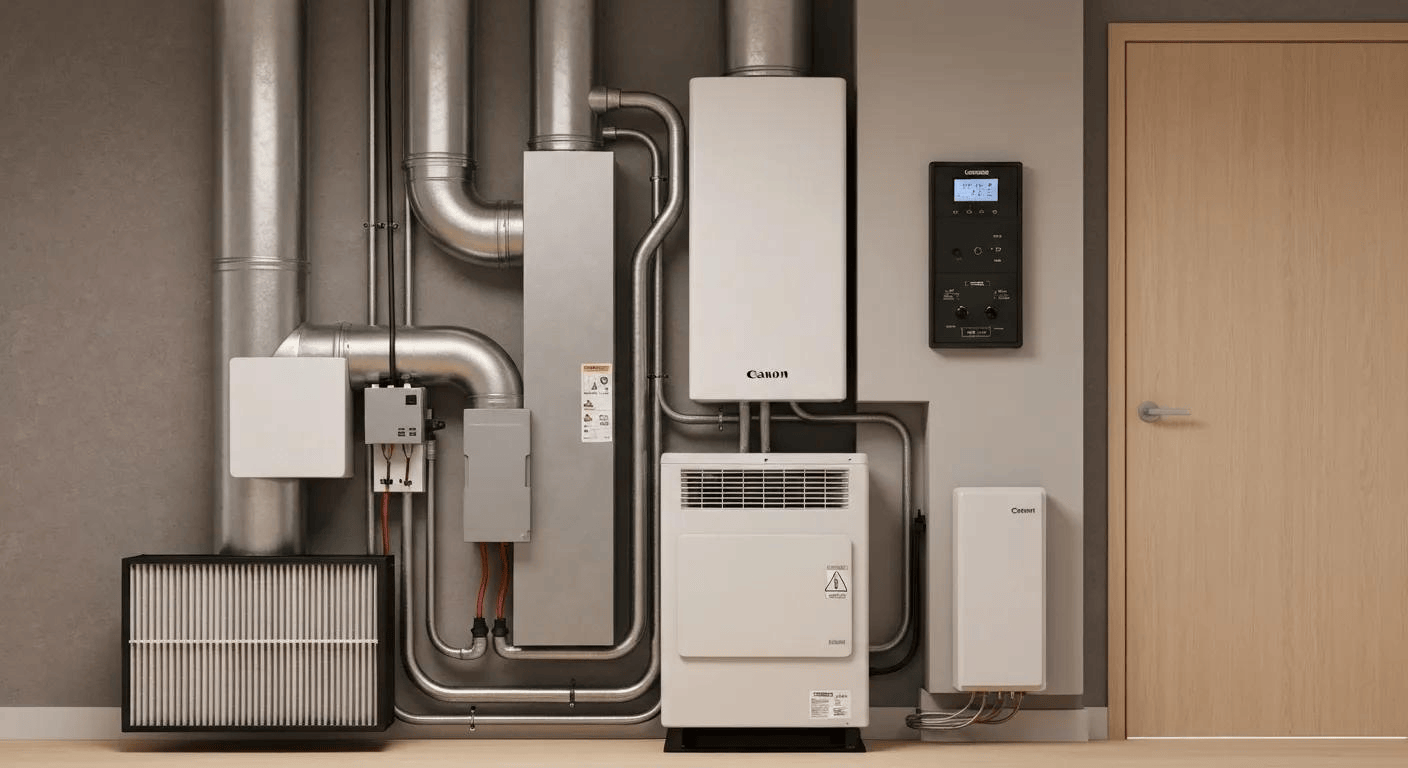10 Essential Tips to Winterize Your Home (and Protect Your HVAC System)
As the crisp air of autumn gives way to the colder temperatures of a Virginia winter, preparing your home is more than just a chore – it's an essential step in protecting your property, maintaining comfort, and safeguarding your wallet. Winterizing your home helps prevent costly damage from freezing temperatures, drafts, and moisture, while also ensuring your heating system runs efficiently when you need it most. A well-winterized home is warmer, uses less energy, and reduces the strain on your Heating system, potentially extending its lifespan and preventing unexpected breakdowns.
Taking the time to prepare your home can seem daunting, but breaking it down into manageable steps makes the process straightforward. Here are 10 essential tips to help you get your home winter-ready, covering everything from sealing up drafts to ensuring your crucial Heating Service systems are prepared for the season ahead.
Why Winterize Your Home?
Beyond just staying warm, winterizing your home offers significant benefits:
- Energy Savings: Sealing air leaks and improving insulation can drastically reduce heating costs by preventing warm air from escaping and cold air from entering.
- Preventing Costly Damage: Freezing temperatures can lead to burst pipes, ice dams on roofs, and damage to exterior elements, resulting in expensive repairs.
- Extending Equipment Lifespan: Proper winterization, especially for your HVAC system, reduces stress on components, contributing to a longer operational life.
- Enhanced Comfort: Eliminating drafts and maintaining consistent temperatures throughout your home creates a more comfortable living environment.
- Improved Health and Safety: Checking safety devices and addressing potential moisture issues contribute to a healthier indoor environment.
By following these steps, you can face the winter with confidence, knowing your home and your family are protected.
10 Essential Winterization Tips
Here are ten key actions you can take to prepare your home for the colder months:
1. Seal Drafts and Air Leaks
Air leaks are one of the biggest culprits for heat loss in a home. Check around windows and doors for drafts. Simple DIY fixes like applying weatherstripping around door frames and windowsills, or using caulk to seal gaps around window panes and baseboards, can make a big difference. Don’t forget less obvious spots like electrical outlets, switch plates on exterior walls, attic hatches, and where pipes or wires enter the home. Sealing these leaks not only keeps warm air in but also prevents cold air from making your heating system work harder than necessary. For larger or harder-to-find leaks, a professional energy audit might be beneficial.
2. Boost Your Insulation
Proper insulation in your attic, walls, and crawl spaces acts like a warm blanket for your home. Ensure your attic insulation meets recommended levels for your climate zone. If you can see the joists in your attic floor, you likely need more insulation. Adding insulation is a relatively easy DIY task for attics, but ensure proper ventilation isn't blocked. For wall insulation or complex areas, consulting a professional is often the best approach to ensure effective coverage and prevent moisture issues.
3. Protect Your Plumbing
Frozen pipes can cause immense damage if they burst. Start by draining any outdoor faucets and disconnecting hoses. Store hoses indoors. If you have exposed pipes in unheated areas like crawl spaces, basements, or garages, consider insulating them with foam pipe sleeves. For pipes that are particularly vulnerable or in areas receiving minimal heat (sometimes near HVAC ductwork), allowing a small drip from faucets during extreme cold snaps can prevent freezing though this should be a last resort due to water usage.
4. Schedule Your Professional Heating Tune-Up
This is arguably the most crucial step, especially for protecting your comfort and investment in your heating system. A furnace maintenance or overall heater service appointment ensures your system is clean, running efficiently, and most importantly, operating safely. Technicians check for potential issues like cracked heat exchangers (a carbon monoxide risk), worn components, and correct operation. This preventative maintenance can catch small problems before they turn into expensive breakdowns in the middle of winter and helps ensure your system is using energy optimally.
5. Change Your Furnace Filter
A clogged furnace filter restricts airflow, forcing your heating system to work harder, reducing efficiency, and potentially leading to overheating or system failure. Check your filter monthly and replace it as needed usually every 1–3 months depending on the filter type and household conditions (pets, allergies). This simple, inexpensive DIY task directly impacts your system's performance and the indoor air quality of your home.
6. Inspect Roof & Clean Gutters
Check your roof for missing, damaged, or loose shingles before winter weather sets in. These can allow water to leak into your home, potentially causing significant damage. Clean leaves and debris from your gutters and downspouts. Clogged gutters can lead to ice dams, where melting snow freezes at the roof edge, causing water to back up under shingles and into your home. Proper attic insulation (Tip #2) and ventilation also help prevent ice dams.
7. Reverse Ceiling Fans
Most ceiling fans have a switch that allows you to reverse their direction. In winter, set your fans to run clockwise at a low speed. This pushes warm air that rises toward the ceiling back down into the room, helping to distribute heat more evenly and potentially allowing you to lower your thermostat a degree or two.
8. Check Fireplace & Chimney
If you use a fireplace, inspect the chimney for cracks or damage. Ensure the damper seals tightly when not in use to prevent heat loss. Consider getting your chimney professionally cleaned and inspected, especially if you haven't done so recently. Blockages can pose fire hazards and prevent proper ventilation.
9. Test Smoke & CO Detectors
Winter means increased use of heating systems, fireplaces, and sometimes generators all of which can increase the risk of fire and carbon monoxide poisoning. Test all your smoke detectors and carbon monoxide detectors to ensure they are working correctly. Replace batteries as needed (it's a good habit to do this twice a year, such as when changing clocks). Ensure you have detectors on every level of your home, including near bedrooms.
10. Prepare Your Exterior
Store outdoor furniture and equipment like lawnmowers. Disconnect and store garden hoses. Trim trees and bushes near your house, especially branches that could fall on your roof or power lines during heavy snow or ice storms. This prevents potential property damage and power outages.
Beyond the Checklist: Rely on the Experts
While many winterization tasks are simple DIY projects, certain critical areas benefit significantly from professional expertise. Your home's Heating system is complex and vital for winter comfort and safety. A Furnace Maintenance or Heater Service check-up performed by experienced technicians like those at Woods Family ensures that this crucial system is ready for the demands of cold weather. Professionals can identify hidden issues, optimize performance for efficiency, and ensure all safety controls are functioning correctly.
For tasks like major insulation upgrades, inspecting the roof for structural issues, or addressing complex plumbing concerns, professional services offer peace of mind and ensure the job is done right, preventing more significant problems down the line.
Let Our Family Help You Prepare for Winter
Preparing your home for winter is an investment in its longevity, your comfort, and your safety. While you can tackle many of these steps yourself, some tasks, particularly those involving your Heating Service, are best left to the experts.
At Woods Family Heating & Air Conditioning, our family has been helping families in the Roanoke Valley and surrounding areas stay warm and safe for generations. With decades of experience and a commitment to quality and value, we understand the unique needs of homes in Western Virginia. We are ready to assist with your critical winterization needs, especially ensuring your furnace or heat pump is in peak condition through our comprehensive Furnace Maintenance services. Let our family take care of your family this winter season.








